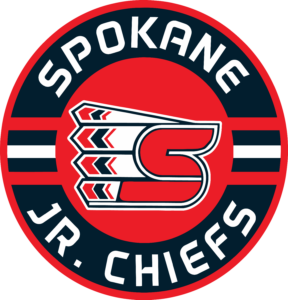Spokane jr Chiefs | New to hockey
HISTORY
Ice hockey is an adaptation of the Native American game of lacrosse. In fact, many of the first rules were borrowed directly from the game, and changes for action on ice.
The first formal game was recorded in Kingston, Ontario in 1855. Twenty years later, students of Montreal's McGill University (credited for much of the game's early development), imposed a code of conduct familiarly known as the McGill Rules. Many of those same principles govern the game today.
In 1885, Canada's first national hockey association was formed, with teams quickly influencing their neighbors to the south. By 1896, teams were competing in the New York area, with the first game between the U.S. and Canada played by 1899.
The first professional league, called the National Hockey Association, formed in 1909. The four original teams from that league (Toronto, Ottawa and two from Montreal) were among the first to play under the auspices of the new NHL in 1917.
Center: Most like football quarterbacks in regard to playmaking ability. Operating up and down the middle of the ice, Centers lead their team's attack by passing the puck between his two wings to set up a goal. Defensively, he tries to keep the play from leaving the attack zone. As the play approaches his own goal, it's the center's job to hustle and break up the opposing team's plays.
Wings: You can't fly with just one. These guys follow the action up and down the rink on either side of the center. Left and right side wings pass back and forth, trying to position themselves for a shot on goal. Defensively, they guard the opponent's wings and attempt to disrupt them.
Defensemen: The two defensemen try to stop incoming play before any chance of scoring is possible. They block shots, clear the puck from their own net area and entertain the opposing team's forwards with body shots and ridicule. Offensively, they move the puck up the ice and pass to the forwards, then follow play into the attack zone.
Goaltender: As the last line of defense, everyone takes a shot at the goalie. This player's challenge is to keep the puck from entering his team's goal. Goalies can use any piece of equipment or any part of his body (even the head) to protect his net.
The Rink
Ice hockey is played on an ice surface known as the rink. A regulation ice rink is 200 ft long x 85 ft wide.
The Goals
A goal net, or cage, is 6 ft wide x 4 ft high. It is designed so that the pucks entering the net will stay in, though shots will occasionally rebound off a back post and carom out. The goal line itself is 2 inches wide.
The Puck
Made of vulcanized rubber. It is 3 inches in diameter and 1 inch thick. It weighs about 6 ounces, and is often frozen before games to make it slide and not bounce.
The Teams
Six players each, made up of a center, a right and left winger, two defensemen and a goaltender.
Referee
The referee controls the game. He calls all of the penalties and must decide the legality of goals.
Linesmen
The duty of the linesman is to determine offsides and icings. They drop the puck for face-offs and chase the puck after stoppage of play. It is also the linesmen's unenviable job to break up fights while the referee assesses the penalties.
